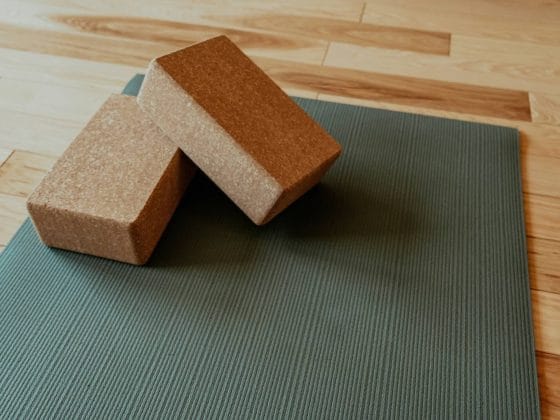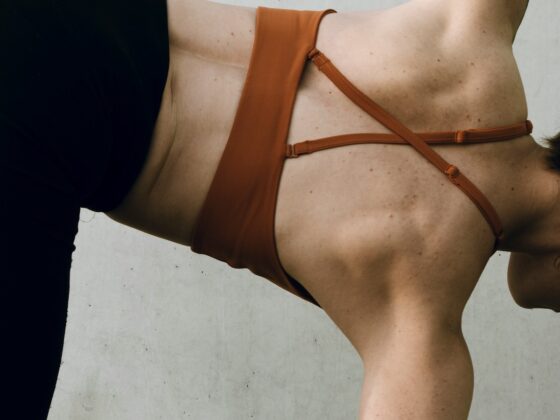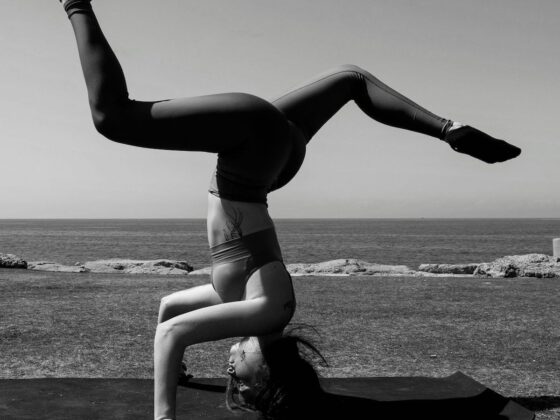I have a friend who’s told me on many occasions that she loves being a beginner at something. She’s always learning about and trying new things with an attitude of, “The more I suck, the better I can become.”
As noble and inspiring as this might be – I definitely do not share her sentiments. And I’m assuming that you don’t either. Being a beginner at anything is tough – especially yoga. You’re forced to face your own impatience and lack of self-compassion when you just can’t quite get into that asana.
However, as a yoga teacher, I’ve had the privilege of witnessing countless beginners take their first steps onto the mat. Having walked along this deeply enriching journey from beginner to teacher – I’ve experienced first-hand how transformative yoga can be when you stick with it.
A lot of yoga teachers make the mistake of offering overly-complicated classes to beginners, which rob these novice practitioners of the opportunity to be nourished by yoga. In this blog post, I’ll share my insights and advice on how to make yoga more accessible for beginners, so they keep coming back for more!
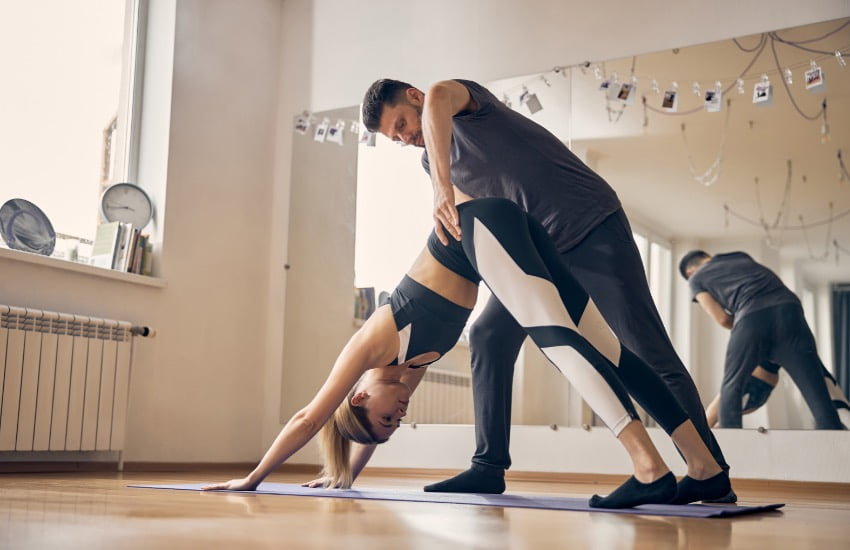
Cultivate a Welcoming Environment
Creating a welcoming and inclusive atmosphere is the foundation of making yoga accessible for beginners. When students step into your class for the first time, they may be apprehensive or unsure of what to expect. It’s our responsibility as yoga teachers to put them at ease and foster a sense of belonging.
Greet each student with a warm smile, introduce yourself, and ask if they have any injuries or specific needs. Encourage questions and be receptive to feedback. By fostering a nurturing environment, beginners are more likely to feel comfortable and open to the yoga experience.
I recall a class where a young girl came to me afterwards and said, “That was my first yoga class. I came to learn how to bend into a pretzel like those Instagram girls. Instead, you made me feel so safe. Like this is my home.” She came back every week and eventually pursued a career in yoga. If you make a beginner (or anyone for that matter) feel like you deeply care about their presence and needs, you might just end up inspiring them.
Start with the Basics
Don’t try to prove that you’re some hot-shot teacher. Beginners are already intimidated – the last thing they need is an overwhelming class. Choose 5-10 basic poses and combine them into a steady-state flow. Make sure you bring awareness to their alignment, breath, and bodily sensations.
Encourage the use of props and offer modifications to make the poses accessible for all. Make it clear that, if a pose becomes difficult, they can take a break in child’s pose (or whichever pose is more accessible). Chilling in downward-facing dog is not exactly everyone’s natural position – so cut the beginners some slack when needed.
Use Clear and Inclusive Language
Effective communication is key to making yoga accessible. Use clear, concise language when instructing poses and transitions. Avoid jargon and Sanskrit terminology, at least initially, to prevent beginners from feeling lost. Additionally, use inclusive language that accommodates different body types and abilities.
Emphasize that yoga is a personal journey, and it’s about how each individual feels in the practice, not how a pose looks. By doing so, you create an environment where beginners don’t feel judged or pressured.
Offer Gentle Adjustments and Assistance
Providing gentle adjustments and assistance can be a powerful tool for helping beginners. When appropriate and with their consent, assist them in finding proper alignment. Avoid forceful adjustments and prioritize creating a safe and supportive space for their practice.
Remember that not all students will be comfortable with physical touch, so always ask for consent before offering adjustments. If they decline, respect their boundaries and provide verbal guidance instead.
Encourage Self-Compassion and Patience
Beginners may be eager to master advanced poses, but it’s our role as yoga teachers to guide them toward self-compassion and patience.
I always focus on sharing my own experiences and challenges in my yoga journey to show beginners that it’s normal to struggle and that growth takes time. Encourage them to embrace each day on the mat with an open heart, knowing that their practice will evolve at its own pace.

Promote Home Practice and Self-Exploration
It often happens where beginners come to me and ask me how many classes they have to attend before they can do specific poses. I politely smile and tell them that if they want to improve, coming to a few yoga classes just isn’t going to cut it.
They have to practice outside of class. Some of them ignore me, while others take it to heart. And in class, you can clearly see whose been doing their homework! So, encourage your students to practice at home and share with them how a home practice has improved your personal practice.
Adapt to Individual Needs
One of the greatest challenges in teaching yoga to beginners is addressing their individual needs. Each student comes to the mat with a unique body, history, and set of expectations. To make yoga accessible, it’s essential to adapt your teaching to these individual needs.
Some beginners may have physical limitations or injuries that require special attention. Always encourage open communication, and be ready to modify poses or provide alternative options to accommodate their specific circumstances. This personalization not only makes the practice safer but also fosters trust between you and your students.
Teach Mindfulness and Meditation
Yoga extends far beyond the physical postures; it’s a holistic practice that encompasses mental and emotional well-being. To make yoga more accessible for beginners, introduce mindfulness and meditation into your classes. Teach them how to observe their thoughts and emotions without judgment – fostering a sense of inner peace and self-awareness.
I love incorporating a few rounds of breath in the beginning and end of my classes to ground my students. I also encourage them to set an intention for the class and to thank themselves for showing up. We often live life on autopilot without any real awareness of why we do what we do. Bring your students into the present moment – showing them that yoga is not just a form of exercise, but a way to chill TF out.
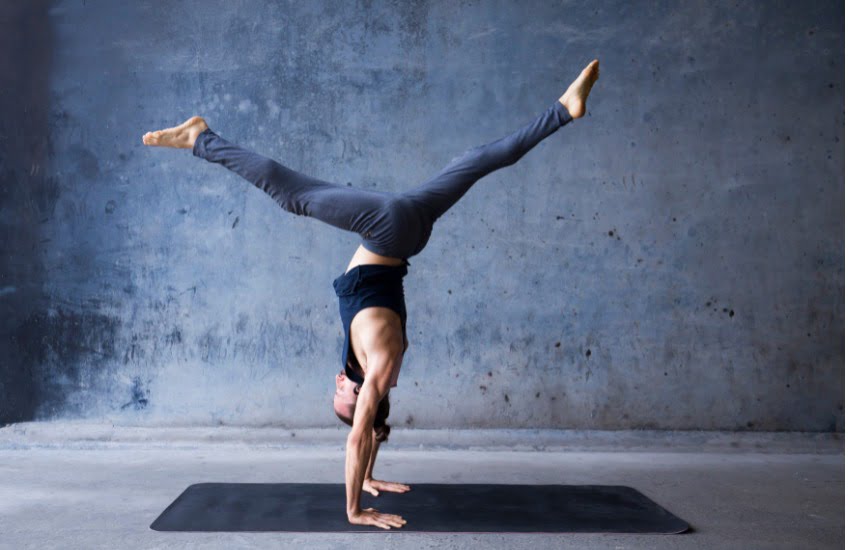
Offer Specialized Workshops
To cater to beginners’ unique needs, consider offering specialized workshops or series that dive deep into the essentials of yoga. These workshops can focus on topics such as yoga for stress relief, yoga for back pain, or yoga for relaxation. Specialized workshops provide beginners with a safe and supportive space to explore specific aspects of their practice in more detail. They also enable you, as a teacher, to provide targeted guidance, answer questions, and build a stronger connection with your students.
When I was a beginner, I loved going to these workshops. The classes were slow, focused, and intimate. I remember going to an arm balancing workshop where we were encouraged to try difficult poses.
Having a teacher slowly guiding me allowed me to get into poses that I otherwise wouldn’t have, which built a great deal of confidence. So, choose a topic that beginners often ask about and offer it as a single or multiple-series workshop. Make sure to emphasise that the class is centred around beginners (because we all like to feel special).
Provide Resources and Recommendations
As a yoga teacher, your role extends beyond the classroom. To make yoga more accessible for beginners, provide them with resources and recommendations.
Suggest books, online courses, or websites that can further their understanding of yoga and its philosophy. Additionally, offer guidance on creating a dedicated yoga space at home. Recommending essential props, like yoga mats, blocks, and blankets, can help beginners establish a conducive environment for their practice.
In Conclusion
Teaching yoga to beginners is a rewarding experience, and it requires an open heart, patience, and a commitment to making the practice accessible to all. I encourage you to place yourself in the shoes of when you were a beginner, and ask yourself – what did I need? What would’ve made this journey easier for me?
Remember that as a yoga teacher, you have the incredible privilege of being a guide on this transformative path. By imparting your knowledge and nurturing a supportive environment, you can help beginners unlock the physical, mental, and spiritual benefits of yoga, setting them on a path toward a healthier, more balanced life.

